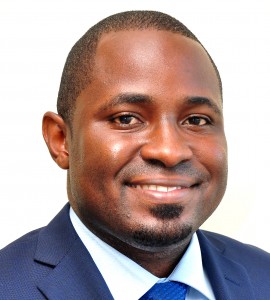Stanbic Bank offers flexibility for home financing
February 19—In most developed countries building a house is a capital-intensive venture which requires a well-developed plan and readily available finances writes Jackson Emanzi.
This ensures the construction starts and is completed on time and the quality of the build is generally not compromised.

Emanzi says Stanbic Bank offers a full bouquet of options including long-term mortgages, equity release facilities and land loans.
In Uganda however as in many developing countries, most people who decide to build their own homes, do so incrementally overtime using business income, personal savings and or small unsecured loans. As a result the entire exercise tends to take a very long time leading to cost overruns, construction delays and extended periods where the house is left unfinished which ultimately affects the quality of the end product.
But what are the alternatives, one might ask? After all getting formal bank financing in a country like Uganda can be challenging and very expensive if you are lucky enough to get it.
Many Ugandans might be shocked to learn that bank financing for home purchases, construction or renovations is not as hard as most people think and paying a mortgage can be almost the same as monthly rent. How can this be possible?
First of all, it’s important to remember when you consider approaching a bank for credit, timing is everything. The period when you apply for a loan can be a major contributing factor as to whether you get the facility or not. In a high interest rate environment the chances of getting a loan are dramatically reduced. This is because banks are reluctant to lend, knowing it’s a lot more difficult or almost impossible for people to pay back the money they borrow.
In Uganda right now the situation is the complete opposite, that’s because in a bid to encourage lending and stimulate economic growth Bank of Uganda has over the past 15 months continuously lowered the CBR to a point where it’s at the lowest level (9%). Most banks especially the larger ones will follow the central banks lead and also reduce their Prime lending Rates. As a result the cost of credit will be cheaper and banks more willing to give out loans because they know borrowers are better positioned to pay back the money.
Secondly borrowing can be considerably more affordable if you do your homework and carefully select not only the bank that best fits your profile but have also rationalised the exact nature of the loan that suits your need? Why? Because despite the CBR being a benchmark figure of the cost of money, not all banks offer the same lending rates. A quick perusal of the BOU Commercial banks tariff guide published every quarter demonstrates this fact.
Stanbic Bank Uganda for example has a PLR of only 17%, the lowest in the market yet there are other banks that remain as high as 25%. Why the difference? Stanbic follows a deliberate policy of matching movements of the CBR with revisions to their PLR. Not all commercial banks in Uganda do this.
In addition the choice of type of facility is equally important. Here we are talking about the importance of matching the right type of debt incurred with the asset requirement. It doesn’t make any sense taking out a 20 year long term mortgage against your house when all you need to do is build an extension, here an equity release which is easier to access and cheaper would be more appropriate.
Loan financing takes many forms. Stanbic Bank for example offers a full bouquet of options including long-term mortgages, equity release facilities, home completion, land loans among others, each of these products has been specifically tooled for a particular function, with different durations, rates and conditions which must be well understood before the loan is taken out.
This brings me the last point the interest rate is not the only factor that makes a loan expensive or prohibitive, the terms often do.
A bank X might offer you a 20-year mortgage facility at what seem to be friendly interest terms and you take it, but when you run into a windfall and look to retire the facility you discover to your horror that you must pay 10% of the outstanding amount as a penalty. Imagine borrowing 500 million shillings and having to pay 50 million shillings as a penalty to pay off the loan early.
Terms and conditions vary from bank to bank depending on internal lending policies, size of the bank and nature of the loan. Stanbic Bank for example does not charge a fee for early settlement of secured mortgage loans. The bank is able to do so because our objective is to encourage people to pay back their loans.
Using a loan or facility to construct, complete or renovate a home needs to be encouraged in Uganda as it will improve the quality of houses being built and go some way towards helping to fill the housing backlog.
For this to happen interest rates must be kept low and the general public made more aware of the multiple benefits of using formal bank financing as a means of easing the construction process.
Jackson Emanzi is Head of Home Loans at Stanbic Bank Uganda

 African Heads of state head to South Korea next week for Summit talks
African Heads of state head to South Korea next week for Summit talks
 Trading leads as main source of income for Ugandans
Trading leads as main source of income for Ugandans
 New leadership for bankers’ umbrella as total assets top $12 billion
New leadership for bankers’ umbrella as total assets top $12 billion
 Brussels Airlines to announce Nairobi service
Brussels Airlines to announce Nairobi service
 SITA promises enhanced travel experience after Materna acquisition
SITA promises enhanced travel experience after Materna acquisition
 Saudia’s 105 aircraft order stretches A320neo lead over rival Max
Saudia’s 105 aircraft order stretches A320neo lead over rival Max
